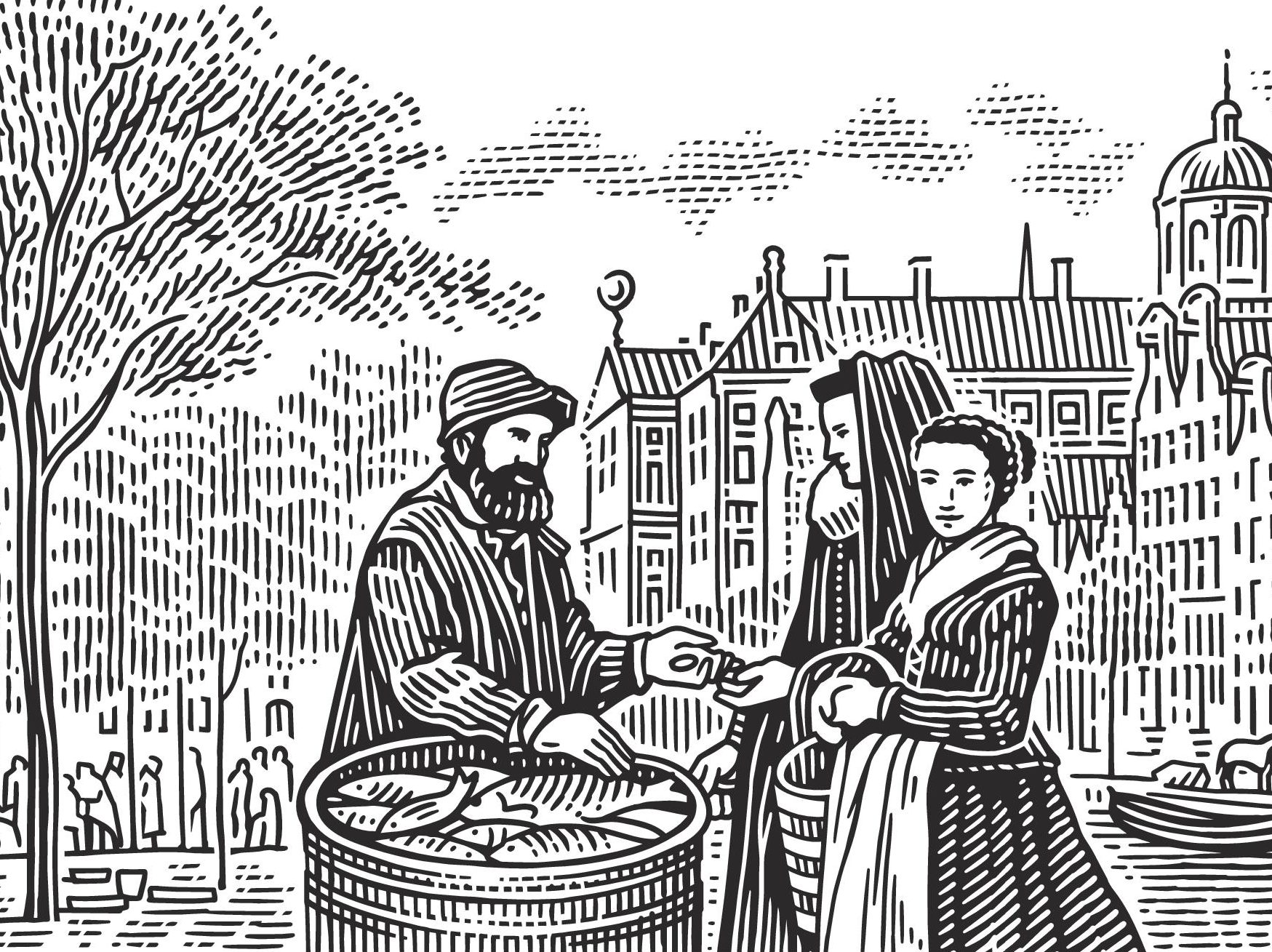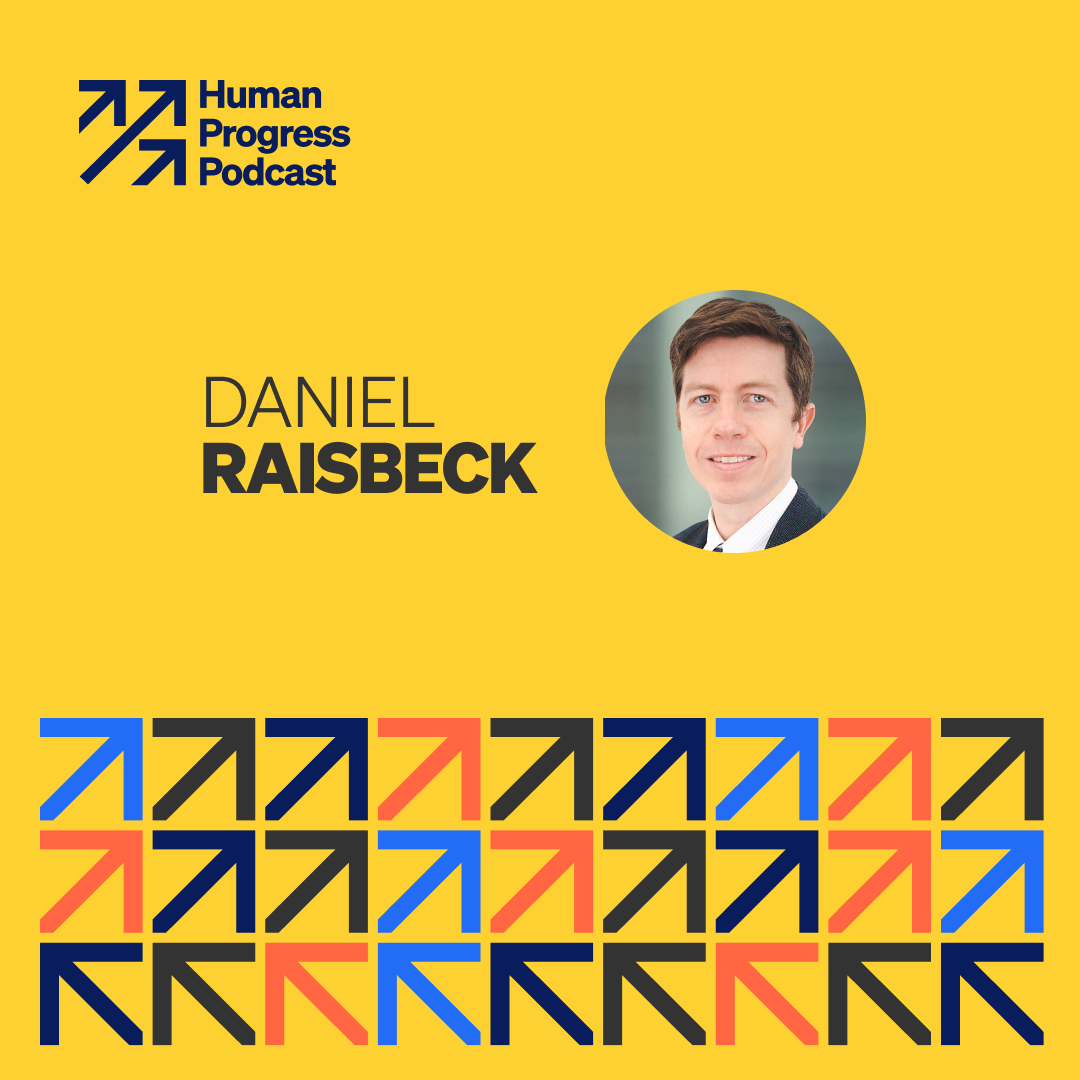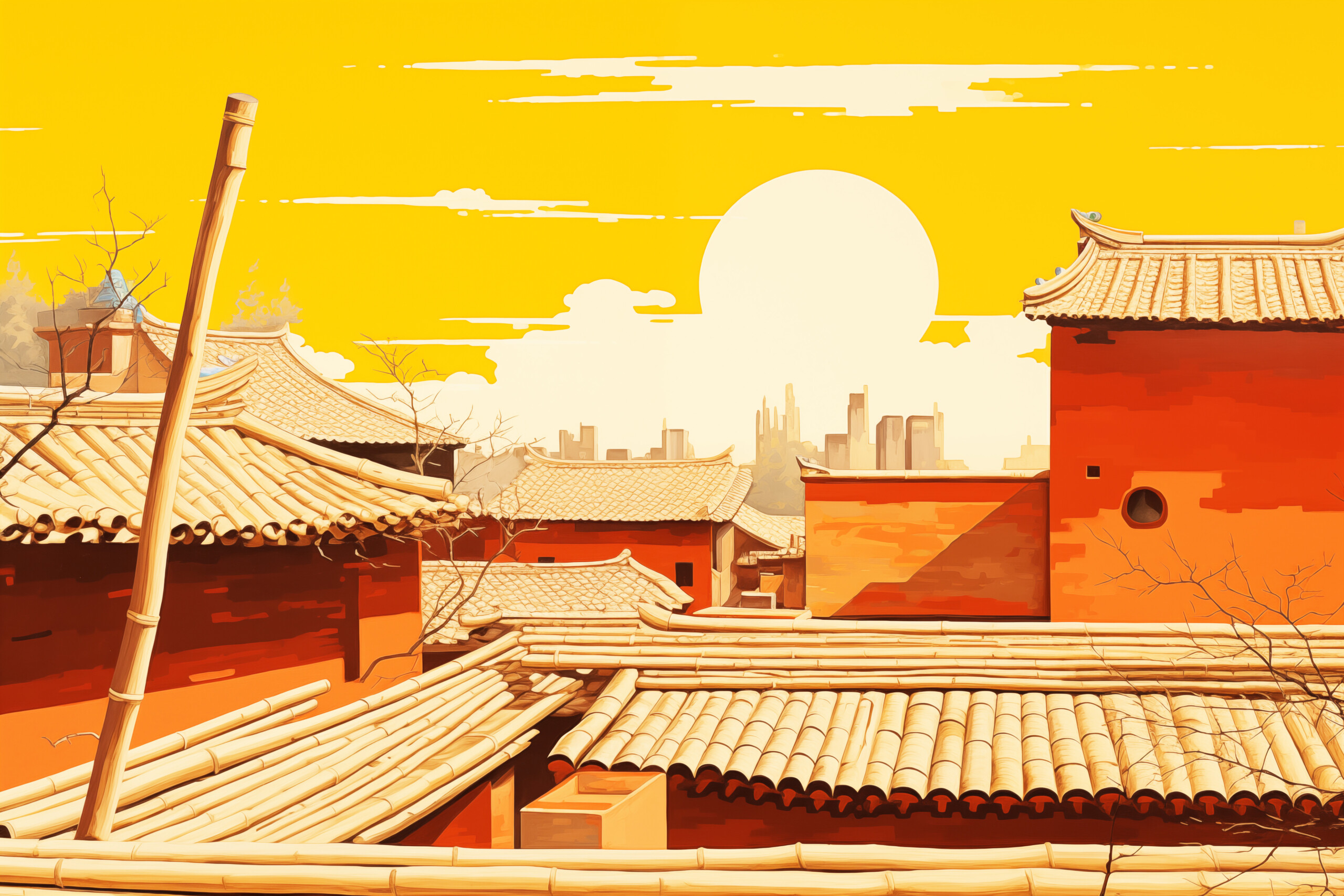Today marks the sixteenth installment in a series of articles by HumanProgress.org called Centers of Progress. Where does progress happen? The story of civilization is in many ways the story of the city. It is the city that has helped to create and define the modern world. This bi-weekly column will give a short overview of urban centers that were the sites of pivotal advances in culture, economics, politics, technology, etc.
Our sixteenth Center of Progress is Amsterdam between the founding of the Dutch Republic in 1581 and the French military invasion of 1672. During the Dutch Golden Age, Amsterdam was an early center of globalization, exemplifying openness to foreign ideas, people and goods. In the 17th century, the Dutch opened up a global trade network with the Far East and gained an increasing share of world trade. The city was also remarkably tolerant with respect to religious and intellectual freedoms. Controversial philosophers and religious refugees alike found a safe haven in the city. Amsterdam served as the headquarters of the world’s first multinational corporation, the Dutch East India Company, which was founded in 1602. Amsterdam can take credit for housing the first modern stock exchange, which has traded continuously since the early 17th century, and is commonly considered the world’s oldest true securities market. As trade and financial innovations enriched the city, Amsterdam also became a global leader in science and art.
Today, the port city of Amsterdam serves as the Netherlands’ capital, but not the country’s government seat, which is in The Hague. It is also the Netherlands’ most populous city. The city is nicknamed the “Venice of the North” due to its many canals dating to the 17th century, which are recognized as a UNESCO World Heritage Site. The city’s fortifications built between 1883 and 1920, known as the Defense Line of Amsterdam, comprise a separate UNESCO World Heritage Site. The city is famous for its nightlife, and many historic sites and museums such as the Van Gogh Museum. The Dutch royal palace is also in Amsterdam, although the current royal family does not use the palace as their primary residence. The city remains the Netherlands’ commercial center as well as one of Europe’s top financial centers. Amsterdam is also one of the world’s most multicultural cities, with at least 177 different nationalities represented among its residents. That extraordinary degree of multiculturalism is a longstanding part of the city’s fabric.
Amsterdam gets its name from the city’s origins as a fishing village that sprung up in the 12th century in a flat and low-lying area by a dam in the river Amstel. Parts of Amsterdam are below sea level, on land that the Dutch successfully reclaimed from lakes, marshes and the North Sea. As the Swedish writer Joakim Book put it, “For centuries, the people living along the Atlantic coasts have carved off and dammed areas when the tide went out, gradually drying saltmarshes and expanding land… Today upwards of one-third of this prosperous northern European nation’s territory lies below sea level… the Dutch have ’one of the most sophisticated anti-flood systems in place anywhere in the world.’” Even today, the Dutch are among the world’s best hydraulic engineers, and the American Society of Civil Engineers placed the country’s water protection systems on their list of the Seven Wonders of the Modern World.
Historically, Amsterdam was not only a center of ingenuity, but of tolerance and openness. During Europe’s wars of religion, Amsterdam was a refuge for Protestants of varying kinds, including French Huguenots. The city prided itself on granting freedom of conscience (geweten) to all residents, which was in keeping with the beliefs of the city’s reigning Calvinist faction. The city’s tolerance did not meet modern standards, of course. Public displays of Catholicism were illegal, and Catholic churches had to meet highly restrictive criteria and remain hidden from public view. But, in an era when religious intolerance could be lethal, and even different Protestant denominations often bitterly opposed one another, Amsterdam took a relatively open-minded approach. Amsterdammers embraced and courted skilled and wealthy foreigners of various creeds, seeing internationally well-connected intellectuals and merchants as valuable members of society. They did that at a time when many other European countries were becoming more insular and religiously intolerant.
Amsterdam became a bustling cosmopolitan metropolis as the population doubled to around 50,000 between 1570 and 1600. By the year 1600, one third of Amsterdammers were foreign-born. Amsterdam was also the center of the Dutch Jewish community. The revolt against the Spanish that led to the Dutch Republic’s founding and kicked off the country’s Golden Age also led to an influx of Iberian Jews seeking greater religious freedom. Amsterdam soon welcomed Jewish refugees from the Thirty Years War (1618–1648) and the Cossack-Polish War (1648–57). To this day, one of the city’s nicknames is “Mokum,” a Yiddish term meaning “place” or “safe haven.” (Centuries later, during World War II, Anne Frank and her family famously hid from Nazi persecution in an Amsterdam canal house built in the 17th century). Amsterdam’s tolerance helped the city to grow. By the 1660s, near the end of the Dutch Golden Age, the city’s population swelled to 200,000. That is around the same population as Madison, Wisconsin, today. (For perspective, the biggest city at the time was probably Constantinople or Beijing, both with over 700,000 people).
Amsterdam was central to the Dutch Golden Age, when the Netherlands rose from a small, obscure nation on the North Sea to become one of the world’s most influential countries. In fact, Amsterdam has been called the “capital of the Golden Age.” Thus it can be said that the Netherlands’ rise stemmed from a rapid and continuous economic expansion centered in Amsterdam.
Among the chief Dutch exports were cheese and fish from the North Sea, such as herring. In 1602, various rival Dutch trading companies joined forces to form the world’s first multinational corporation, headquartered in Amsterdam. The Dutch East India Company facilitated trade with Mughal India during the latter’s period of proto-industrialization. The company imported goods such as textiles and silks, provided shipping, and diversified into various other commercial activities. For its complexity, it has been labeled a proto-conglomerate. The Dutch East India Company has also been called the prototype or forerunner of the modern corporation. The megacorporation was both a transcontinental employer and trailblazer of foreign direct investment. The company’s formation was arguably a key episode in the dawn of modern capitalism. It must be noted that the company was, appallingly, also tied to the Dutch slave trade and colonial expansionism. Slavery was still common in many societies at the time, and the Dutch colonists were no exception.
Amsterdam’s openness to trade extended beyond traditional goods and services; Amsterdammers also traded stocks. It is true that Bruges was home to the first bourse, where traveling Italian bankers traded securities in the Van der Buerse family’s inn (from which the word bourse is derived) in the early 15th century. However, most scholars agree that Amsterdam can take credit for housing the first stock exchange in the modern sense. The Dutch East India Company established the Amsterdam Stock Exchange in 1602, and the Dutch East India Company became not only the first modern corporation, but also the first corporation in the world to be listed on a stock exchange.
Long-distance trade by ship was a risky undertaking, with goods traveling from Asia to Europe susceptible to loss in shipwrecks or theft by pirates. The stock exchange allowed the company to spread out the risks (as well as the dividends) of international trade among a broad pool of investors. When a voyage ended in a shipwreck, no single entity had to bear the full cost of the loss. When an expedition was successful, many investors benefited. Shareholders soon gained the ability to transfer their shares to third parties, and by the mid-17th century, the flourishing stock exchange inspired the formation of “trading clubs” around Amsterdam. Those clubs met in coffee shops or inns throughout the city to discuss transactions and cultivated a growing community of traders. The Netherlands was also, unfortunately, home to the first great speculative financial bubble, when tulip bulb contract prices in the futures market soared to unprecedented highs before collapsing in 1637.
The French historian Fernand Braudel disputed the broadly-held view that Amsterdam held the “first modern stock exchange,” but conceded that Amsterdam’s exchange had historical significance: “[W]hat was new in Amsterdam was the volume, the fluidity of the market and publicity it received, and the speculative freedom of transactions.” In sum, the amount of trading activity that occurred in the Amsterdam Stock Exchange was unprecedented.
Amsterdam grew increasingly prosperous, thanks to its role as a financial center and a key player in international trade. As the Dutch Republic became one of the world’s richest countries, the Dutch poured funds into science and art. During that era, the Dutch invented microbiology, discovered Saturn’s moon Titan, and invented the pendulum clock. The Dutch Golden Age also produced some of history’s most beloved painters such as Rembrandt (1606–1669), who worked in Amsterdam, and Vermeer (1632–1675), who lived in Delft but who received artistic funding from Amsterdammers, including the silk trader and art collector Hendrick Sorgh (1666–1720).
Amsterdam’s renowned tolerance attracted cutting-edge thinkers like the French philosopher René Descartes (1596–1650) and the English “father of liberalism” John Locke (1632–1704) to take refuge there for a time. The city’s atmosphere also gave native Amsterdammers like the philosopher Baruch Spinoza (1632–1677) the intellectual freedom to explore their ideas. Amsterdam was willing to print many controversial books that other European cities would not, incentivizing various intellectuals abroad—such as the English political philosopher Thomas Hobbes (1588–1679)—to arrange to have their books printed in the Dutch city.
The Dutch Golden Age came to an abrupt end in 1672, which is commonly called the Rampjaar or “Disaster Year,” when the Franco-Dutch War broke out. The French troops and their allies nearly overran the Netherlands and caused great destruction. The Dutch only managed to stop Louis XIV’s advance by intentionally flooding their own country. The Dutch had developed an ingenious defensive system called the Dutch Water Line. The Dutch Water Line could quickly flood the nation and transform the Netherlands into something close to a set of islands. The Dutch had used intentional flooding as a military tactic dating to the Dutch War of Independence (1568–1648), but the Dutch Water Line took the concept to a new level. The Dutch deliberately flooded their country with a layer of water that was too deep to allow an invading army to advance by foot but too shallow for boats to traverse. The flood brought movement across the Netherlands to an effective standstill and stopped the French invasion.

Perhaps no city better exemplifies the benefits of social openness and early globalization than Dutch Golden Age-era Amsterdam. By embracing foreign peoples, goods, and ideas, what began as a small fishing town became a prosperous global capital of philosophy, science, and art. Far-ranging trade, new corporate structures, innovations in finance and engineering, and acceptance of intellectual and religious refugees, all helped to make Amsterdam successful. For its myriad groundbreaking achievements and the underlying attitude of openness that helped enable them, 17th century Amsterdam is deservedly our sixteenth Center of Progress.




